Saving water indoors
Learning to read your water meter can pay off. It’s easy to do and it is a way to determine if you have a leak in your home.
First, turn off all the water in your house. (Remember to wait for the hot water heater and ice-cube makers to refill, and for regeneration of water softeners.)
Next, go to your water meter and jot down all the numbers you see. Also, look at the flow indicator gauge, which is a small red triangle or diamond. If it is not moving you do not have a serious leak.
To check for slow leaks, read your water meter before and after a one-hour period when no water is being used. If the readings are different after the one-hour period, you have a leak. If you have a well, listen for the pump to kick on and off while the water is not in use. If it does, you have a leak.
Some areas to check include toilets, faucets, malfunctioning water softners, swimming pools, water heaters and faulty irrigation valves. Other leaks can be harder to find such as underground leaks, foundation leaks and leaks behind walls. These may require the assistance of a plumber to locate.
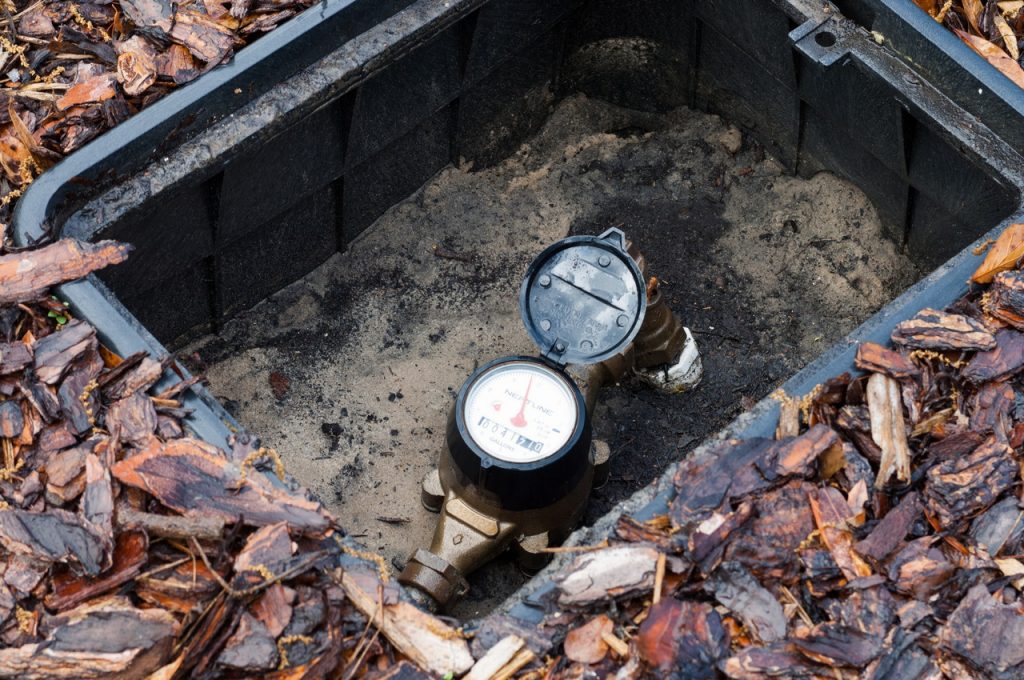
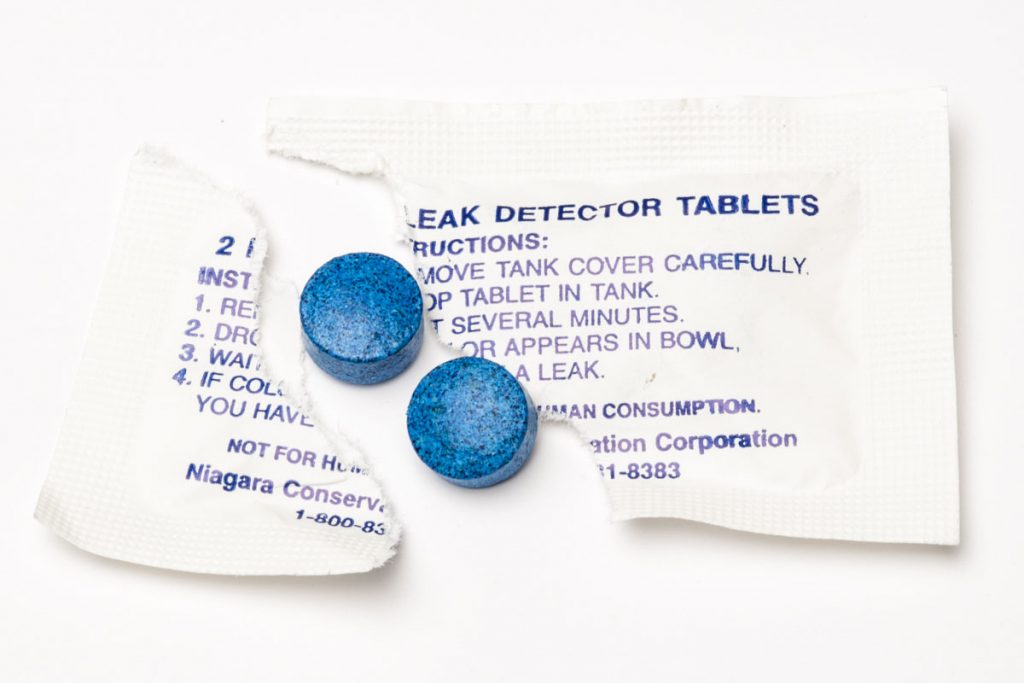
Whether remodeling a bathroom, starting construction of a new home, or simply replacing an old, leaky toilet that is wasting money and water, installing a WaterSense labeled toilet is a high-performance, water-efficient option worth considering. WaterSense labeled toilets are available at a wide variety of price points and a broad range of styles and in many areas, utilities offer rebates and vouchers that can lower the price of a WaterSense labeled toilet.
Check to see if your toilet is a low-flow model. Since the mid-1990s, toilets have been redesigned to conserve water. Newer models use 1.6 gallons per flush and high-efficiency toilets use 0.8 to 1.28 gallons per flush. Older models use 3.5 gallons per flush. You may want to consider purchasing a newer model.
Toilet leaks are often silent, allowing loss of water to go undetected for long periods of time. Some toilets may produce a running water sound that is easy to hear. Some leaks are visible as a small trickle running from the rim to the water in the bowl. The average leaky toilet can waste about 200 gallons of water per day.
To detect silent leaks, remove the lid from the toilet tank, remove any colored cleaning agents, flush to clear water in the bowl, then add dye tablets, leak detector fluid or a few drops of food coloring to the tank. If the tank is leaking, color will appear in the bowl within 30 minutes. Flush as soon as the test is complete.
To fix a leak yourself, you need a large adjustable wrench and a screwdriver. Now follow these simple steps:
- Jiggle the handle. If that makes the toilet stop running, the chain or guide wire attached to the handle may have been out of alignment.
- If the toilet flush handle frequently sticks in the flush position, letting water run constantly, replace or adjust it.
- Make sure the handle fits snugly against the tank. If it doesn’t, use the adjustable wrench to tighten the nut attached to the handle on the inside of the tank.
- Check the rubber flapper or flush valve at the bottom of the tank. It may not be resealing tightly after flushing. If it is worn or corroded, it needs to be cleaned or replaced.
- Replacement kits with easy-to-follow instructions are available at most hardware and home stores.
- Check the tank water level. The correct water level is about one-half inch below the top of the overflow tube in the middle of the tank. The overflow tube drains directly into your sewer system. To lower the water level, use the screwdriver to adjust the screw on the end of the ballcock float arm or bend the float arm down until the correct water level is achieved.
- If the water won’t shut off at all, replace both the flapper and the ballcock.
- If these simple procedures don’t stop the leak, you should call your plumber.
Avoid flushing the toilet unnecessarily. Dispose of tissues, insects and other such waste in a trash can rather than in the toilet.

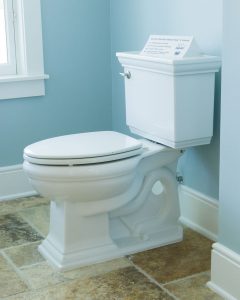
Install low-flow showerheads. The older the showerhead, the more water it uses. Most new showerheads deliver 2.5 gallons of water per minute. Some new models deliver less than 2.0 gallons per minute. Older fixtures can deliver as high as 5 gallons per minute. Pressures have been adjusted to the low-flow fixtures to deliver as good a shower as the higher flow showerheads.
Check your showerhead for leaks. Make sure the showerhead is screwed tightly to the wall and check the washer for wear. To fix a leaky showerhead or to install a new showerhead, you need an adjustable wrench or pliers and joint sealer or tape.
Now follow these steps:
- Shut off the water.
- Use the adjustable wrench to remove the old showerhead.
- Clean the threads to remove old joint sealer.
- Apply joint sealer or tape, using package instructions.
- Use the adjustable wrench to install the showerhead. (Use a cloth between the showerhead and the jaws of the wrench to avoid scratching your fixture.)
- Turn the water supply on and test the showerhead.
Time your shower to less than five minutes. Turn the water on to get wet, turn off to lather up, then turn back on to rinse off.
Use the minimum amount of water needed for a bath by closing the drain first, filling the tub only one-third full. The initial burst of cold water will be warmed by the hot water as the tub fills. When adjusting water temperatures, instead of turning the water flow up, try turning it down to balance the temperature.
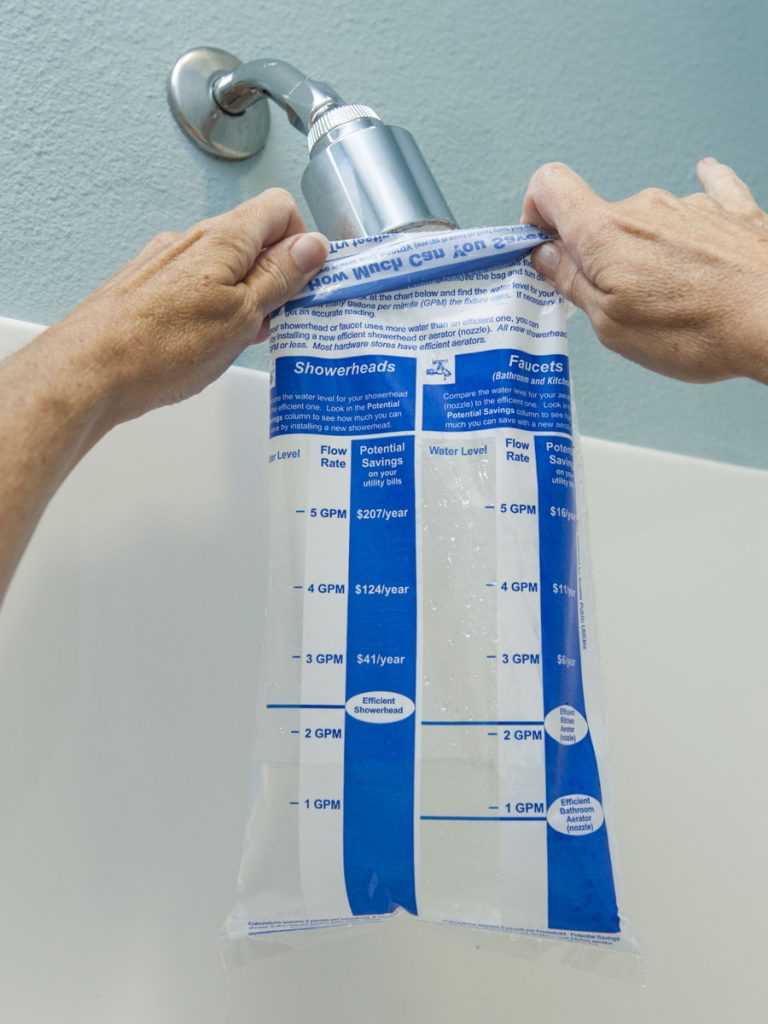
Turn off the water as you brush your teeth, wash your face or shave. Faucets left in the open running position waste from several hundred to several thousand gallons of water per day.
A leak at the rate of one drop per second can waste up to 2,700 gallons per year. Check faucets regularly for leaks at the faucet head and seepage at the base and its connections.
Leaky faucets are repaired by replacing washers and by tightening or repacking the faucet stem. Do-it-yourselfers can find a variety of repair kits in local plumbing supply stores, home improvement/hardware stores and discount stores. Most kits contain detailed instructions and a listing of necessary tools. If preferred, a plumber can make repairs.
Check the amount of water flowing from each faucet. You can do this by opening the faucet and allowing the water to flow into a container for 10 seconds. Multiply the amount of water in the container by six to determine the per minute flow. If your existing bathroom faucet flows above 2.2 gallons per minute, install a low-flow aerator or replace the faucet with a model that uses 1.5 gallons per minute or less. For a bathroom faucet, a 1.0 gallons per minute flow will provide enough water for personal hygiene needs. For a kitchen faucet, you will want 2.2 gallons per minute of flow to make sure the flow of water is enough to wash and rinse dishes.
Faucet aerators are circular screened disks, usually made of metal, that are screwed onto the head of the faucet to reduce flow. Aerators for kitchen faucets are available with a variety of spray patterns and flow-control features. You may want to use a low-flow aerator with an on/off flip handle that allows you to increase or reduce the flow as needed. Faucet aerators require periodic cleaning of grit and scale buildup that may inhibit flow.
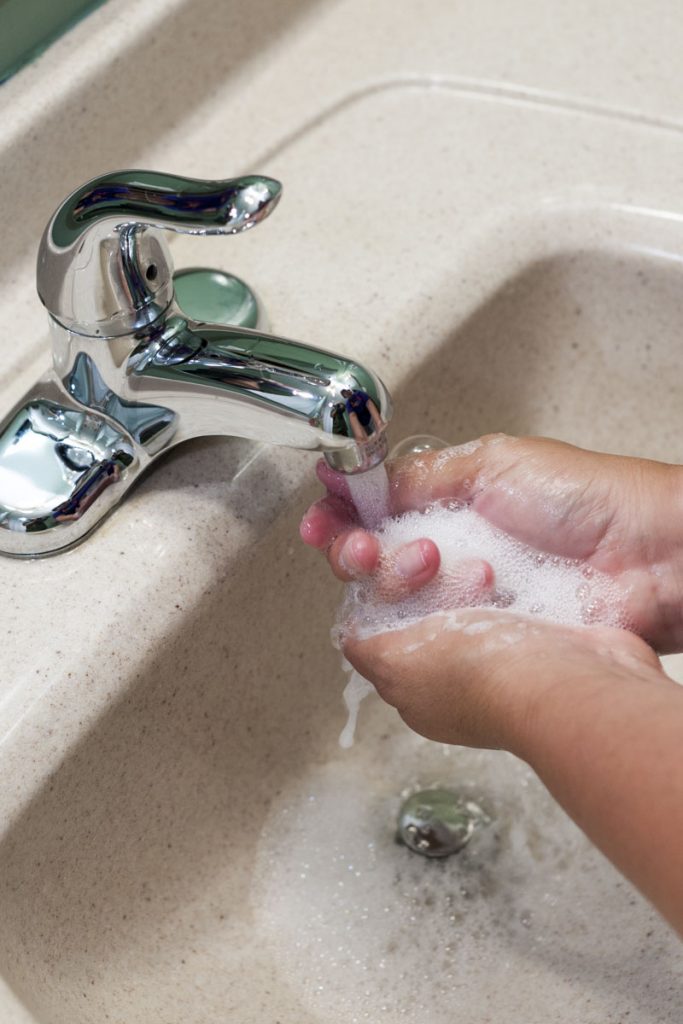
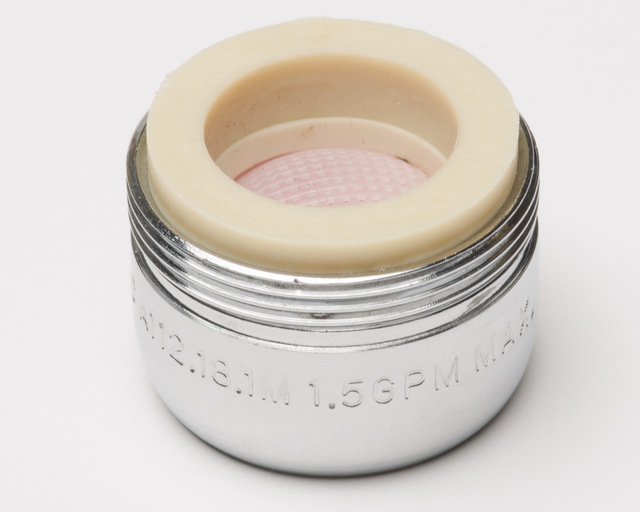
When you replace your clothes washer, consider a ENERGY STAR® model that uses an average of 13 gallons of water per load. Older and non-water efficient washing machines can use as much as 40 gallons of water per load.
For washing machines with variable settings for water volume, select the minimum amount required per load. If load size cannot be set, operate the washer with full loads only.
Use the shortest wash cycle for lightly soiled loads. Normal and permanent press wash cycles use more water. Check hoses regularly for leaks. Pretreat stains to avoid rewashing.
Find more information on water-conserving clothes washers.
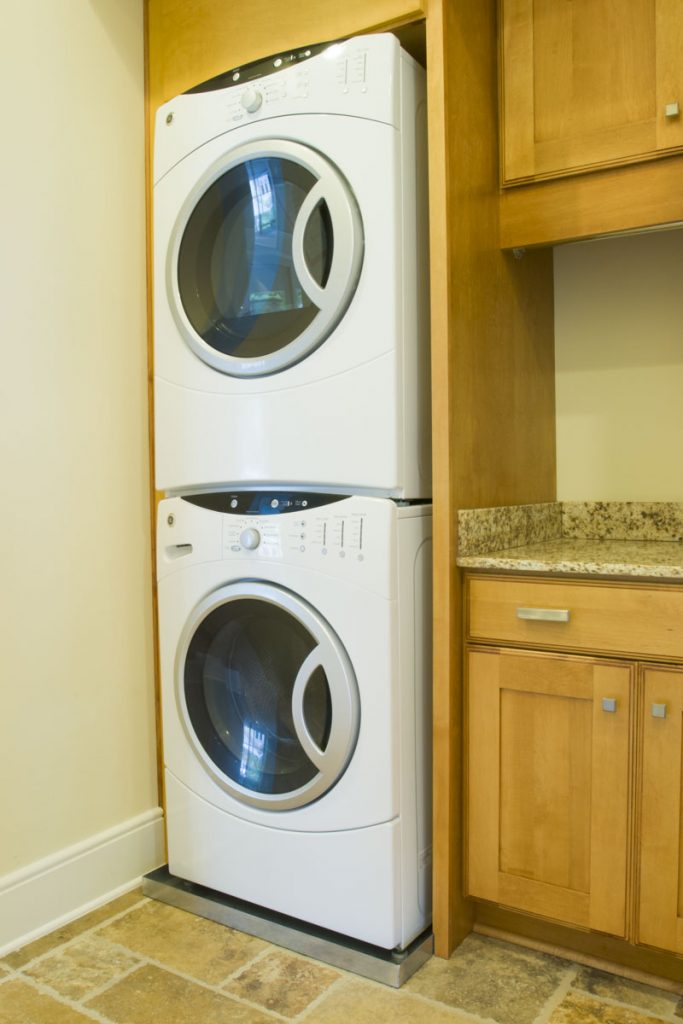
When purchasing a standard-size dishwasher, consider a model that uses 6.5 gallons of water per cycle or less. Compact models should use 4.0 gallons per cycle. Older models can use 11 gallons per load.
Operate the dishwasher only when you have a full load.
When washing dishes by hand, fill one sink or basin with soapy water and fill the rinsing sink to one-third or one-half full. Avoid letting the water run continuously in the rinsing sink.
Find more information on water-conserving dishwashers.
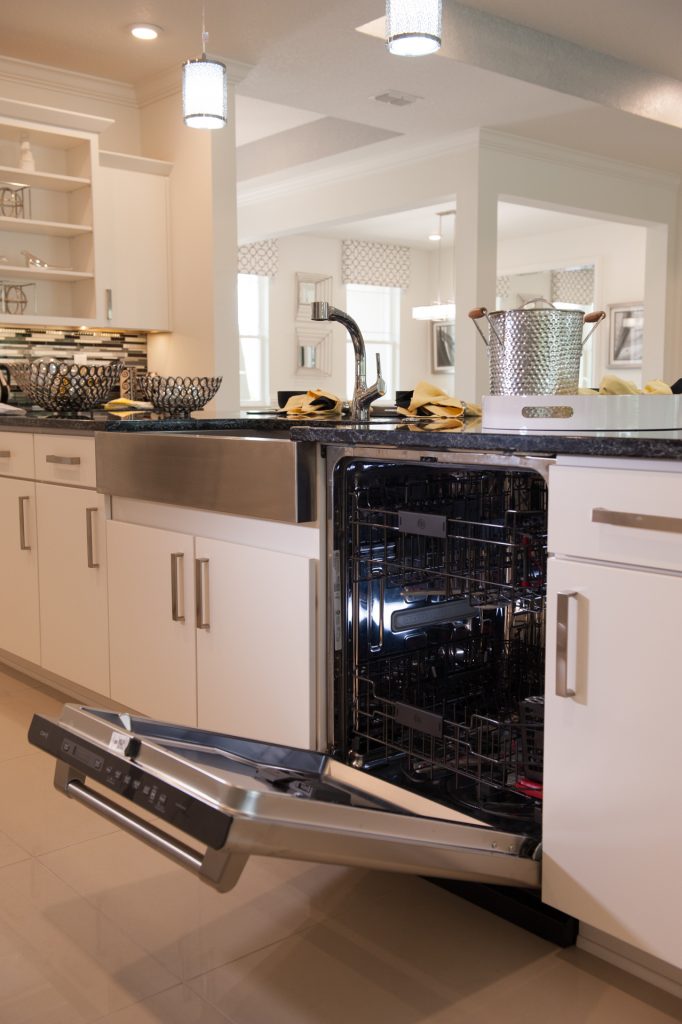
The following are additional ways to save water and money inside your home.
- Do not use running water to thaw meat or other frozen foods. Defrost food overnight in the refrigerator or by using the defrost setting on your microwave.
- Install instant or on demand hot water in the kitchen so you don’t have to let the water run while it heats up.
- Insulate your water pipes. You’ll get hot water faster plus avoid wasting water while it heats up.
- Avoid installing a water-to-air heat pump or air-conditioning system. Newer air-to-air models are just as efficient and do not waste water.
- Install water-softening systems only when necessary. Save water and salt by only running the minimum amount of regenerations necessary to maintain water softness. Turn softeners off while on vacation. Also, consider installing a system capable of using potassium instead of sodium with demand-based regeneration.
- Never put water down the drain when there may be another use for it, such as watering a plant or cleaning.
- Replace leaky drain plugs in sinks and bathtubs.
- Store drinking water in the refrigerator instead of letting the tap run while you wait for cool water to flow.

